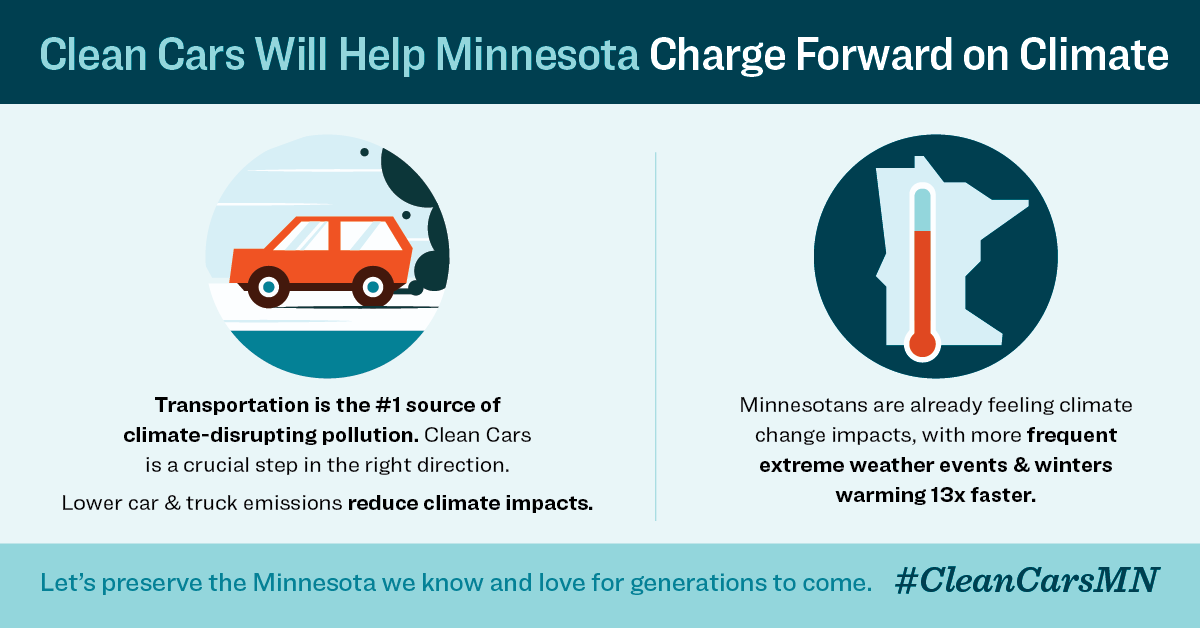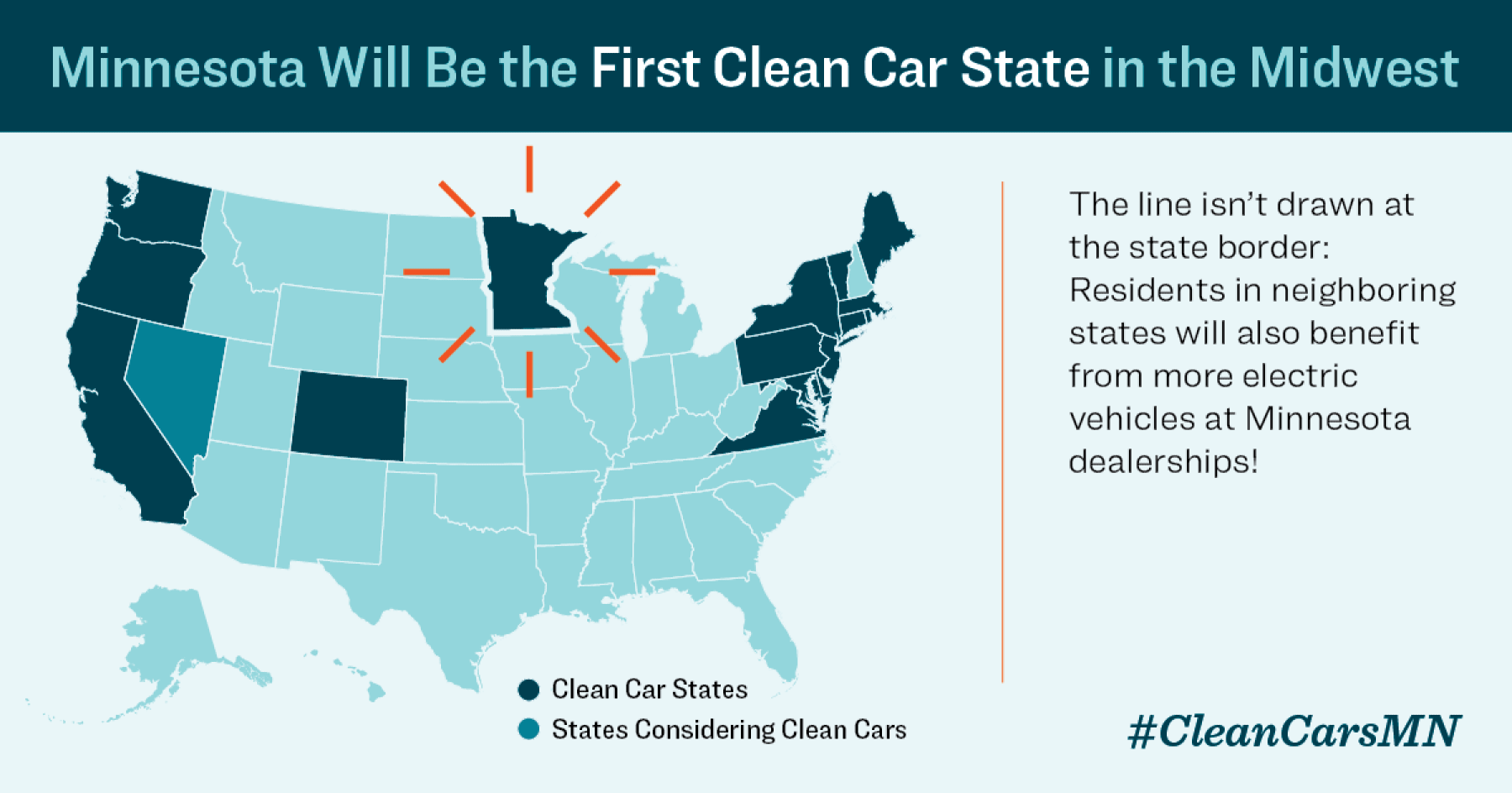Right now, Minnesota is poised to take an important step forward on climate action and public health. The state just wrapped up two days of virtual public hearings and is currently taking public comments on adopting clean car standards through March 15.
How did we get here, and why does adoption of this program matter?
The First Clean Car State in the Midwest
In 2019, while the Trump administration attacked states' authority to protect its residents through strong clean car standards (a program adopted by over a dozen states and the District of Columbia), Minnesota Governor Tim Walz took action to move the state forward on cleaning up air pollution and fighting climate change.
Walz announced Minnesota would join a growing list of states and territories adopting clean car standards, a strong signal of state action at a time when the federal government was throwing all things clean transportation in reverse.
The program requires new cars sold in the state to emit fewer greenhouse gases and it also requires that an increasing percentage of new cars sold in the state be zero-emission vehicles.
This announcement kicked off a public process where residents submitted comments and testified in person in support of strong clean car standards and the need for the state to reduce climate pollution from cars, trucks, and SUVs. Hundreds of Sierra Club members and supporters made their voices heard. Recently, Minnesota released a draft clean cars rule in December, opening up the public comment period for the rule which goes through mid-March.
Anyone in the nation can offer a comment for why Minnesota should adopt the clean cars rule.
If you’re an advocate for climate action, public health protections, and consumer choice, now is your chance to help Minnesota lead on being the first clean car state in the Midwest.

Transportation is the leading source of climate-disrupting emissions in Minnesota and the nation. In 2007, Minnesota set a goal through the Next Generation Energy Act to reduce 80 percent of total emissions by 2050. So far, the state is not on track to meet its climate goals.
Minnesota’s adoption of clean car standards will help change this by reducing tailpipe emissions from new cars, SUVs, and light-duty trucks, as well as increasing the number of electric vehicles available in the state. Current estimates suggest that Clean Cars Minnesota will eliminate two million tons of climate emissions annually by 2030 and help put the state on track to meet its emissions reduction goals.
The harmful impacts of air pollution can’t be overstated. The World Health Organization has declared it a public health crisis because air pollution contributes to more than eight million deaths annually. In Minnesota, air pollution contributes to roughly 2,000-4,000 deaths each year, as well as hundreds of increased hospital visits, according to a Life and Breath report released by the Minnesota Pollution Control Agency and Department of Health.
Clean car standards would have a tremendous impact on Minnesota’s air quality, saving thousands of lives in the state and preventing other respiratory illnesses.
Tragically, we know air pollution disproportionately affects communities of color and low-income communities. This is an environmental justice issue, as the people that have been historically underrepresented in policy and decision-making are disproportionately harmed by tailpipe pollution. Adopting the clean cars rule will help reduce toxic exposure for already overburdened communities.
Clean Cars Will Empower Consumers & Grow Minnesota’s Economy
The Sierra Club’s Rev Up Electric Vehicles report shows that states with clean car standards have more electric vehicles available for purchase on dealership lots and provide consumers with a better overall shopping experience, a critical part of the shift to electric vehicles. Volunteers in states that did not have clean car standards reported encountering a lack of sales knowledge about electric vehicles at dealerships, including little to no information about incentives and credits that exist to save consumers money.
Right now, Minnesota consumers have few choices when it comes to purchasing an electric vehicle. A report by the Department of Transportation found that there were only 19 models of electric vehicles available in Minnesota, out of 43 in the marketplace as a whole, meaning Minnesotans have less than half of the total electric vehicle models available to them.
A clean car program would offer Minnesota consumers more choices and allow them to purchase the vehicles that are right for them, including some of the newly announced electric trucks headed to the market.
Fourteen states and the District of Columbia—representing over 35 percent of new vehicles sales in the nation—have adopted such standards. Because of this, the construction of public charging and automakers' investments have been concentrated in those states. Let’s get Minnesota on board.
Electric vehicles require little or no gasoline and need much less maintenance than gas-powered vehicles. This results in significant savings for the state, and puts money back into the pockets of consumers. Studies show that Minnesota will save $9 billion over the next 15 years and consumers will save $3,000 over the lifetime ownership of an electric vehicle.
Savings from the state can be used for investments in the state’s clean energy transition, and consumers’ savings can result in increased consumer spending, which will benefit the local and state economy.
Array
Knowing all these benefits—as well as the costs of climate inaction—we can no longer live in the past. It’s time Minnesota steps up as a leader in the Midwest region, home of the auto industry, and becomes the first Midwest state to adopt a clean cars standard.
